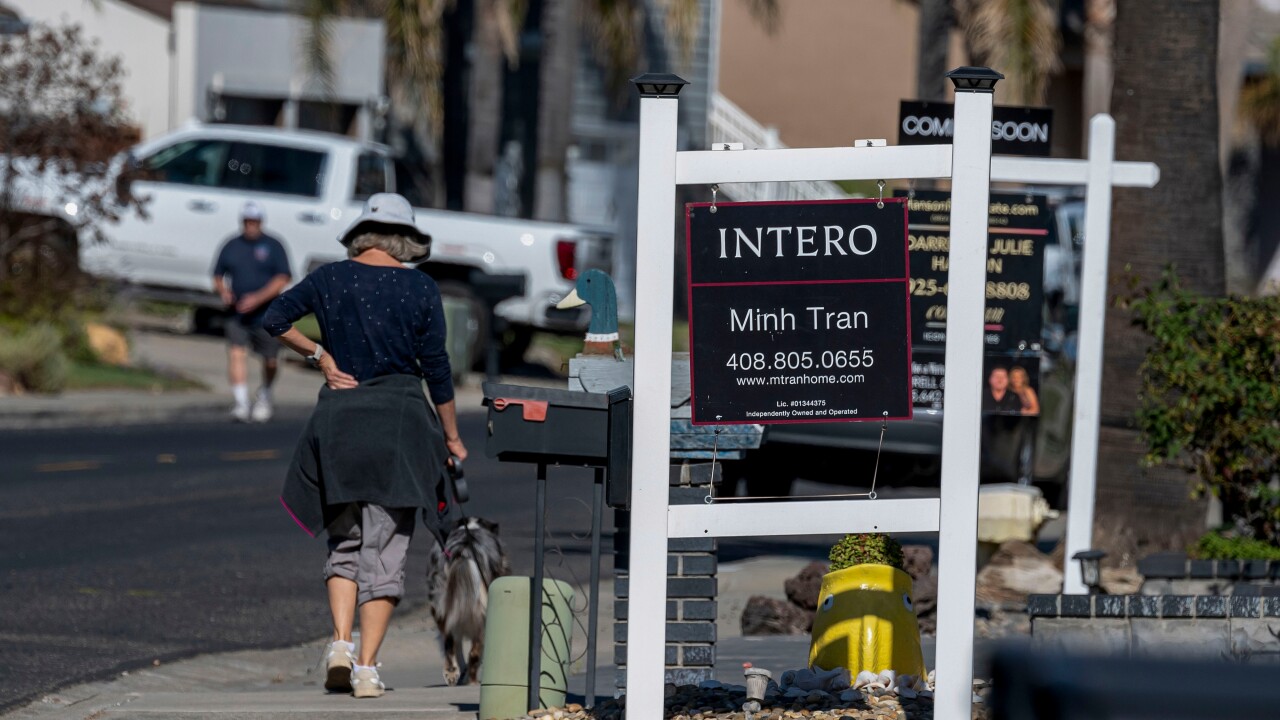With for-sale inventory scarce and many homeowners locked into low interest 30-year fixed rate mortgages, some lenders see potential of drawing in business through renovation products.
A recent survey of homeowners conducted by TD Bank found that over two-thirds, or 69%, are either currently renovating or have plans to in the next two years. It also revealed that 57% of those who had never taken out a home equity loan say they plan to apply for one in the next 18 months, rising considerably from just 9% who held that view in 2022.
"A renovation project is popular because the existing inventory just doesn't exist," said Dan Peinovich, construction sales manager at Fargo, North Dakota-based Bell Bank Mortgage. "That's, of course, a bit of an exaggeration, but it's not far from the truth in some markets."
HELOC interest grows before tailing off
The majority of HELOCs come with variable rate terms and are currently running at an average of close to 9%. Tied to the going prime rate, HELOC averages rise and fall with policy decisions of the Federal Reserve.
As the central bank raised its rate over the past several months,
The decline in originations also coincided with a shift in priorities among borrowers at the Bank of Oklahoma in the midst of inflation and rising rates, according to Tanya Ball, its home loans regional director. While the bank's marketing campaigns in 2022 showed clients holding strong interest in using HELOCs to fix up their properties, other economic priorities have come to the fore more recently.
"What we're seeing — the majority — is debt consolidation right now. Home renovation took a little bit of a backseat," Ball said.
And in spite of the recent growth of HELOC originations, a "surprisingly high number" of borrowers never drew from their equity, according to Ken Flaherty, manager, home equity, at Curinos.
"Sizes are going up. But actual usage is going down," he said, noting that the gap between HELOC size and utilization has grown over the past decade.
Renovation loan products get a closer look amid low inventory
"As you climb over that $100,000 need for renovation, especially in the bigger projects, it does become more of a math equation," said David Lewis, author of the book Fixer Upper Funding and a renovation lending specialist at Movement Mortgage.
While originating a new mortgage might mean giving up existing low-payment terms, the blended monthly cost of a HELOC on top of an existing loan may exceed what refinancing would be for some borrowers. "It depends on the cost, the rates they currently have, the balances as well," Lewis said.
The sluggishness of the current housing market is also driving some existing homeowners to do renovations, when it serves as a backup option. "What I'm starting to see is people losing out maybe two, three, four bids — even more in some cases, and they start to circle back around," Lewis said.
Rejected buyers or other aspiring homeowners who took a step away from the market after determining a purchase was beyond reach become natural prospects for a renovation loan, Peinovich similarly noted.
"There's quite a few people that are in properties today that would love to enhance their living situation, either in terms of expanding or updating and upgrading," he said. "The fly in the ointment has been rates."
But once rates fall to a more agreeable range, that set of clients is likely to become "one of the hidden gems" for companies offering renovation lending "because there is no expectation, right now anyway, for existing inventory levels to change dramatically."
Regulatory changes surrounding ADUs could drive loans
But in addition to the potential loan volume growth, it would help alleviate existing housing issues, according to Erik Hand, residential lending director for Seattle-based Homestreet Bank, which offers the FHA program. "Maybe it encourages people to develop ADUs, which can help the inventory issue that we have in a lot of areas," he said.
While only available for loans falling within FHA conforming limits, the addition of new supply would help meet affordable housing goals proposed by the Biden administration and federal stakeholders.
The FHA's announcement provided the latest boost of momentum for ADU advocates, who have seen victories throughout the country in 2023. In October, California signed into law a bill
The California decision followed the passage of legislation in other Western cities, including Salt Lake City and Anchorage, Alaska, this year loosening some zoning codes and restrictions.
Key to new deals: marketing and product education
For lenders who also service their loans, such as Homestreet, an existing client portal offers a built-in outreach tool that provides insights into who might turn into natural candidates for a renovation or remodel loan. But marketing also requires education and efforts to go beyond the consumer.
"We want to make sure that real estate agents and builders are available or are knowledgeable about our products," Hand said.
At the Bank of Oklahoma, which has introduced spring marketing campaigns for its HELOCs, special introductory promotional rates have proven to be a popular draw. But the bank also says homeowners and lenders would benefit from educating consumers about how much equity they have accrued in the past few years.
"For somebody who lived through the first financial crisis where you had people upside down, this is kind of a new idea that you actually have so much equity and what are the things you can do with it," Ball said. "That's not something that we've talked about in a long time."
Homeowners might come in with limited knowledge about the array of products available, according to Peinovich, who said some feel pigeonholed into very few options. "It's very interesting when we get the opportunity to go to builder shows and consumer home shows — when we're able to share what those opportunities look like, even if it's not something that they can take advantage of immediately. It gives them some hope for something down the line."





